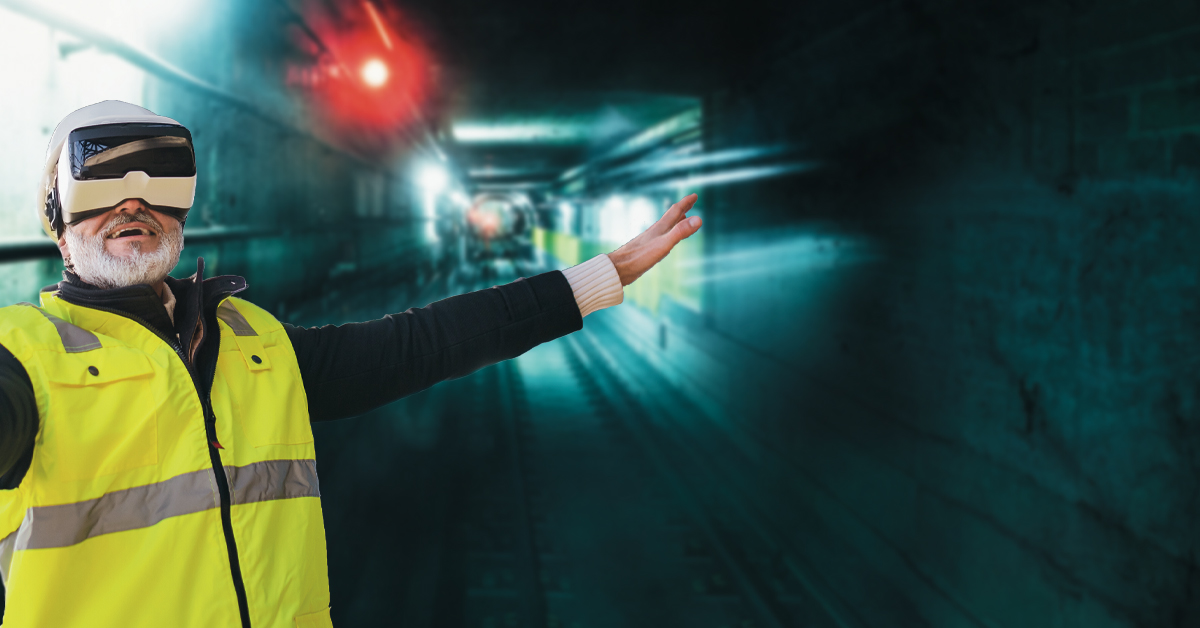
The Value of Virtual Reality (VR) and Augmented Reality (AR) in High-Consequence Environments

Within high-consequence industries, research has found that 45% of organisations believe that Virtual Reality (VR) simulations and Augmented Reality (AR) visualisations are either important or critical to achieving their goals.
These immersive technologies are changing how organisations train their employees and manage day-to-day operations, particularly in industries such as aerospace, petrochemical, energy, pharmaceuticals, and manufacturing.
According to the latest figures from HSE, more than 693,000 people sustained an injury at work in 2019/20.
Some of the advantages of using VR and AR in high-consequence industries are:
- Give you the ability to create scenarios in which employees are ‘learning by doing’ without any consequences
- Allow for experiential learning as the employee can immediately see the outcome of any decision made
- Deliver step-by-step instructions that can be overlaid onto a real-world environment, which reduces the risk of human error
- Lowers costs by enabling training to be completed remotely and minimising the need for expensive physical simulations
Offsite Simulation – Virtual Reality
VR training simulations can transport learners anywhere and put them into any number of different scenarios. When you need to train staff members how to respond to a potentially hazardous incident, it either isn’t possible to create this scenario in real life or there is a high cost attached. For example, think about what it takes to train someone how to use a fire extinguisher. You have to recreate a dangerous environment and use physical equipment which can be expensive to replace.
Simulations created using VR offer a safe way to train individuals how to respond in a given situation. Learners can repeat the process until they have reached the level of competence required. Safety alone is reason enough for organisations to justify investing in VR training, as the cost of an accident in a high-consequence industry can be huge.
The majority of what we learn comes from experiencing things first hand – ‘learning by doing’. VR enables people to get ‘hands-on’. This has been shown to increase knowledge retention by more than 4 times when compared to more traditional methods of training.
Industry Case Study – Transnet Sea and Rail Port
Transnet needed a way to quickly educate visitors on the setup and dangers contained within a working port. Their challenge was that every visitor needed to go through a rigorous security and safety briefing, but this could take over an hour to complete and was dependent on staff availability.
The resulting VR training solution allowed visitors to quickly navigate to areas of port and visualise potential dangers in context. After selecting a particular location, users were then able to look around in 360 degrees and interactive touchpoints highlighted the dangers in each area.
This solution helped to reduce the costs associated with removing staff from site to conduct the brief. It also improved overall site safety by educating visitors about the various hazards and tracking compliance.
Onsite Visualisation – Augmented Reality
Once training has been completed offsite, AR visualisations can then be applied to bridge the gap between the training room and the physical working environment. This ensures ongoing safety and compliance. Checklists are still largely paper-based within high-consequence industries, leaving room for human error.
The power of AR lies in the fact that it can be used to overlay real-time digital information onto real-world locations. Take the shutdown of manufacturing machinery as an example. This may involve ten steps that need to be followed in an exact order, with any deviation resulting in an increased risk of injury or downtime. Rather than relying on memory or a manual, staff can use a set of AR smart glasses to visualise each step, with basic animations increasing understanding. Users can also capture evidence, such as photos or video footage, using the in-built camera. This can then be used to keep records that demonstrate the organisation is continuing to meet regulatory requirements.
Across vast sites, it isn’t always possible to have more experienced technicians in the right place at the right time. The remote capabilities of the technology combine live video streaming with AR, so technicians can offer over-the-shoulder support wherever they are. This means they can directly see what the team member in the field is seeing and can draw into their field of view to guide them to a safe solution.
Industry Case Study – Air BP
One of the greatest risks in the aviation industry is pumping the wrong grade of fuel into a small aircraft. Despite extensive training, Air BP was always reliant on ground operators following procedure. This meant human error was still a factor to consider.
To minimise this, the company launched an AR solution that uses image tracking to automatically recognise decals for various fuel types. The app then ensures the operator knows which fuel they need to pump and avoids any mistakes.
The solution is now being used across 496 vehicles at 126 airports, completing over 12,500 fuellings per week.
From Simulation to Visualisation
Integrating VR and AR technologies can transform the way businesses in high-consequence industries train their employees – driving safety, reducing cost, and improving compliance.
Click here to read the article in full.
By Fuzzy Logic Studio
580 Views
Recent Posts
- Introducing Fairfax Couty Economic Development Authority – Newcastle Helix, Tuesday 1 April, 5pm – 8pm
- NRL Group earns position 28 on medium-sized 2025 UK’s Best Workplaces™ List
- Futureproof Careers Parent & Carer Evening Event at Sacred Heart Catholic Secondary Redcar
- ABLE ‘Meats’ Demand Of Food Production
- Webinar: Revisiting the Jonava Ammonia Tank Rupture 35 Years On
Back to News >



